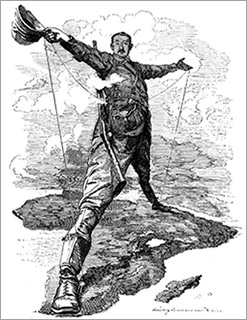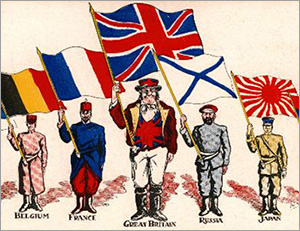Survival Strategies
Over the 18th and 19th centuries, as modern Europe began taking shape, the newly evolving nation-states competed intensely for power and prestige.
In this struggle, they came to rely on four key strategies. Click on each strategy to learn about its components.
Modern historians use the acronym MAIN to describe this set of strategies.



